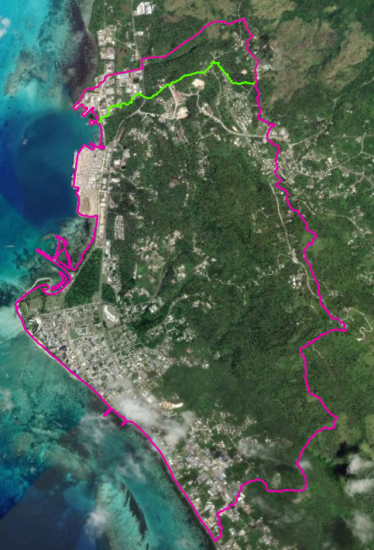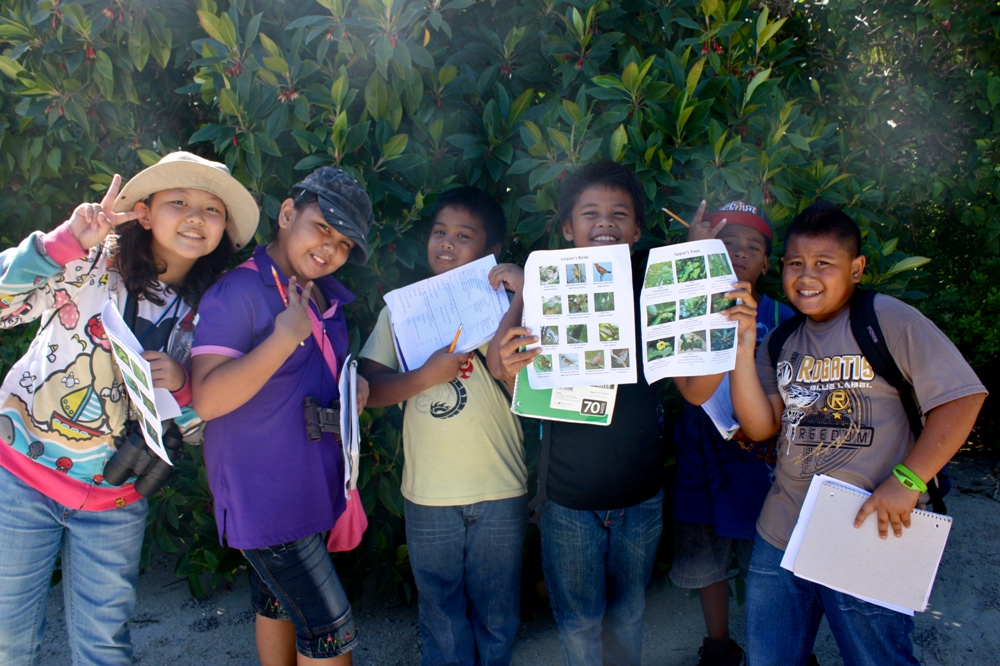Garapan / West Takpochao
In CNMI, increased development in coastal and inland areas and increased use of our terrestrial and marine natural resources has exacerbated threats facing our environment. Trends observed by long-time residents include an increase in impermeable surfaces, the localized depletion of fish stocks, increased contamination of beaches and near-shore waters, and destruction of coral reefs. These effects are magnified within the urbanized Garapan area, which serves as Saipan’s center of population, commerce, economic development, and tourism.
Although the majority of the environmental threats are land-based, strong rains during parts of the year and the natural flow of water causes land-based threats to have dramatic effects on the Saipan lagoon. From a long-term perspective, the decline in marine health threatens the CNMI’s cultural heritage, traditional ways of life, and physical protection from storms. However, this decline also immediately impacts CNMI’s tourism and fisheries industries, and thus its economy. As such, the CNMI government places coral reef ecosystem conservation and management as a priority concern (CNMI & NOAA CRCP 2010).
The Garapan Conservation Action Plan (CAP), developed in 2013 and updated in 2015, was a cooperative effort between local, regional, and local partners to coordinate efforts in order to enhance, preserve, and conserve the many natural, cultural, social, and economic resources within the Garapan area of Saipan. The Garapan CAP was reviewed and updated in 2019-2020, with consideration of challenges faced in implementing the original CAP and a more integrated approach inclusive of sustainable development. The resulting planning document, the 2020 Garapan Watershed Management Plan (GWMP), is intended to guide watershed management, conservation, and development over the next 10-years, with continued input and review from the Watershed Working Group (WWG).

Ongoing Projects
Through the process of developing the 2020 GWMP, impairments and threats to the Garapan watershed were identified, including bacterial contamination from human and animal waste; non-bacterial polluted runoff from fats, oils, and grease (FOG); invasive species that threaten critical habitat due to inadequate permitting; native wildlife population decline; and illegal harvest. Causes of these impairments included aging or inadequate infrastructure to prevent flooding and polluted runoff, improper sewer hook-ups, improper disposal, lack of best management practices integrated into permitting and regulations, a lack of invasive species management, and unclear or inadequate rules and regulations.
To address these impairments and causes, this plan aims to:
- Improve lagoon water quality.
- Improve management of Critical Habitat (i.e. wetlands, mangrove, seagrass, reef, forest).
- Foster sustainable and resilient development through.
Garapan Watershed Warriors

From 2014-2017, the CRI Watershed Coordinator held biweekly presentations with the 4th grade classes at Garapan Elementary School. Presentations ranged from defining a watershed, to learning about coral life cycles.
Storm Drain Cleaning
BECQ staff are working with staff from the Department of Public Works to clean out the underground drainage pipes and open ditches throughout Garapan. Hundreds of pounds of dirt mixed with wastewater, garbage, grease and rainwater are being removed from these pipes and ditches and properly disposed of.

